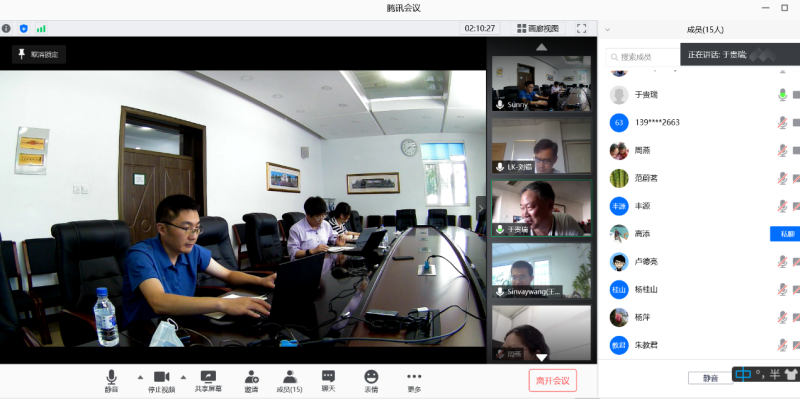Seminar of STS program 'Development and Demonstration of Optoelectronic Equipment for In-situ Fine Measurement of Ecosystem' Held via Video Conferencing
On July 7, 2020, the STS (the Science and Technology Service Network Initiative of the Chinese Academy of Sciences) program 'Development and Demonstration of Optoelectronic Equipment for In-situ Fine Measurement of Ecosystem' which was undertook by the Institute of Semiconductors of the Chinese Academy of Sciences (PI: Prof. ZHOU Yan) held a seminar on the project 'Installation, Commissioning and Demonstration of Canopy Fine Three-dimensional Structure Imager and High-precision Methane Monitor' at the Qingyuan Forest Ecosystem Field Observation and Research Station of the Chinese Academy of Sciences (hereinafter referred to as Qingyuan Station). The seminar was held via video conferencing and the main venue was in Shenyang.
Academician YU Ruigui served as the leader of the Project Expert Advisory Group and presided over the seminar. More than 20 people from Qingyuan Station, the CAS Institute of Semiconductors, the Hefei Institute of the Chinese Academy of Sciences and other CAS institutes participated in the seminar through video conferencing.
First of all, on behalf of the Institute of Applied Ecology and Qingyuan Station, ZHU Jiaojun thanked the experts of the Project Expert Advisory Group and project PIs for their long-term support and trust. He then introduced the purpose of this seminar. After that, Dr. Sun Yirong reported on the implementation status of the canopy structure fine measurement project. Dr. Gao Tian introduced the flux facilities and LiDAR system installed on the tower network observation platform at Qingyuan station and related research they currently carried out. Prof. Wang Xinwei and associate Prof. Liu Kun gave talks on the development of the canopy fine 3D structure imager and the high-precision methane monitor, respectively.
The Project Expert Advisory Group conducted detailed discussions on the instrument development, the application of high-tech in ecological monitoring, as well as the functions and roles of the tower network platform at Qingyuan Station. The Project Expert Advisory Group recommended staff of the Qingyuan Station to strengthen independent innovation, popularization and application of high-tech instruments; to develop new monitoring fields; to conduct world-class research; to advance the application of high-tech instruments in ecology and field research stations; and to develop the Qingyuan Station into a regional-central field station in Northeast China that helps solve practical problems in forestry.
The seminar laid a good foundation for the smooth completion and acceptance of the project tasks undertaken by Qingyuan Station, and provided an opportunity for the Qingyuan Station to clarify its research questions and development direction.
The main purpose of the STS program 'Development and Demonstration of Optoelectronic Equipment for In-situ Fine Measurement of Ecosystem is to solve the bottleneck problems facing ecological monitoring in China: first, the degree of automation and fine measurement is still not high; second, the monitoring equipment is heavily dependent on imports; and third, some key ecological parameters lack necessary monitoring techniques.
The program selects the key ecological parameters of water, heat, greenhouse gases, plants, animals and aquatic organisms that are in urgent need of fine measurement, and develops near-infrared atmospheric scintillators, high-precision methane monitors, forest canopy fine three-dimensional structure imagers, infrared stereo cameras for wildlife monitoring, aquatic organism in-situ monitoring system, i.e. five optoelectronic detection instruments that may be achieved with breakthroughs and recommended to be used and demonstrated in field stations of forest, farmland and lake research.




